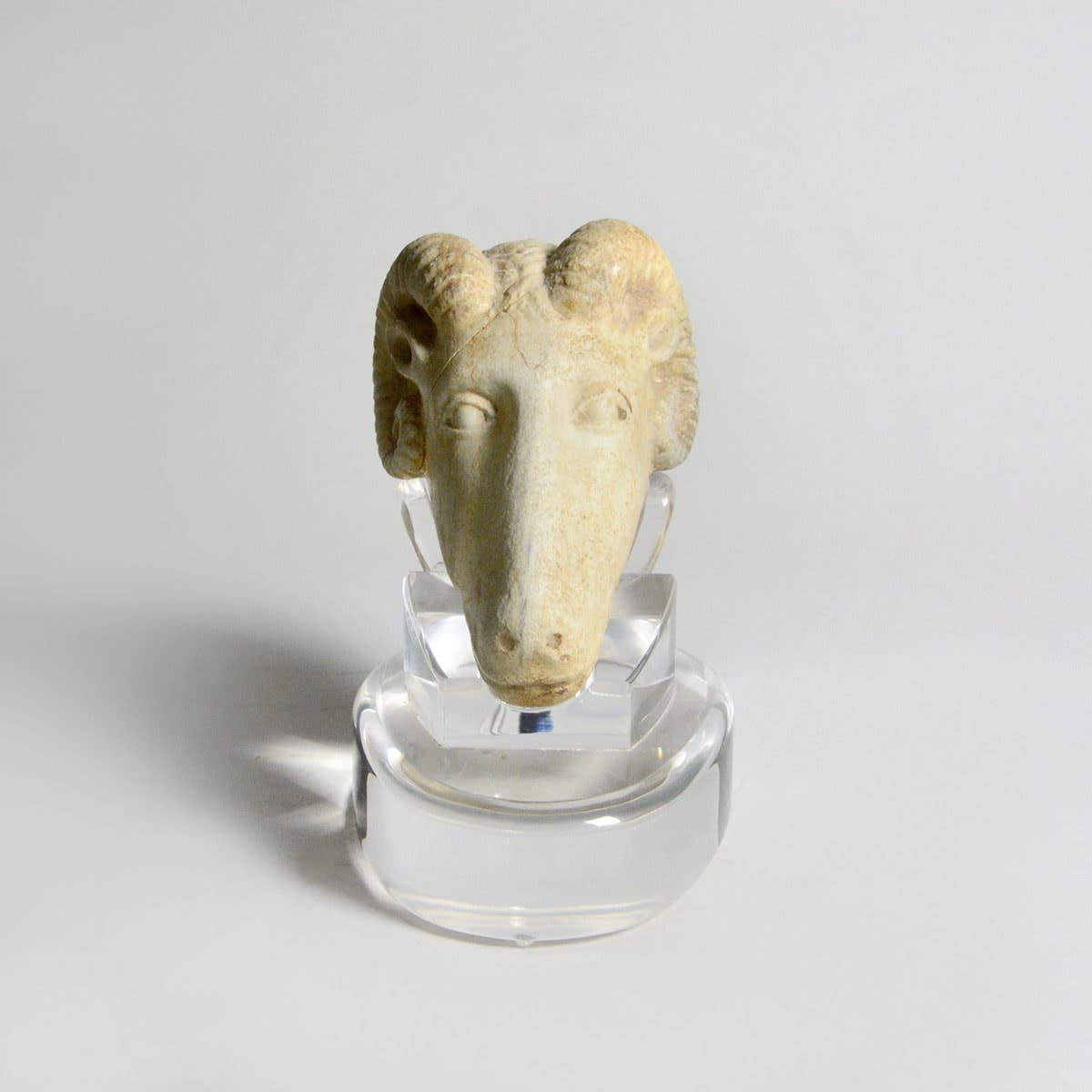Roman Sculpture of a Ram's Head, 100 CE - 300 CE
Marble
height 17.1 cm
height 6 3/4 in
height 6 3/4 in
PF.5275
Further images
This well-modeled head of a ram captures the essence of the animal with the articulated ridge running across the top of its snout. This feature gives prominence to its nostrils...
This well-modeled head of a ram captures the essence of the animal with the articulated ridge running across the top of its snout. This feature gives prominence to its nostrils and mouth. Its eyes are carefully modeled as are its horns and ears.
One may suggest that our head originally came from a statue because it is both executed in the round and exhibits a clean break along the lower, horizontal edge of the neck. As such, the original may have served either a decorative function adorning a garden of a Roman villa on analogy with other animal sculptures serving that purpose from Pompeii or as an adjunct for a statue depicting a deity, as seen in a selected number of examples in Italian museums.
References:
For animal sculptures from Pompeii, see, Royal Academy of Arts, Pompeii AD 79 (London 1976), catalogue numbers 76, 83, 88, passim; and for the use of animals as adjuncts for Roman sculpture, refer to, C. C. Vermeule, III, Greek Sculpture and Roman Taste (Ann Arbor 1977), figures 35, 36, and 58a-b.
One may suggest that our head originally came from a statue because it is both executed in the round and exhibits a clean break along the lower, horizontal edge of the neck. As such, the original may have served either a decorative function adorning a garden of a Roman villa on analogy with other animal sculptures serving that purpose from Pompeii or as an adjunct for a statue depicting a deity, as seen in a selected number of examples in Italian museums.
References:
For animal sculptures from Pompeii, see, Royal Academy of Arts, Pompeii AD 79 (London 1976), catalogue numbers 76, 83, 88, passim; and for the use of animals as adjuncts for Roman sculpture, refer to, C. C. Vermeule, III, Greek Sculpture and Roman Taste (Ann Arbor 1977), figures 35, 36, and 58a-b.







